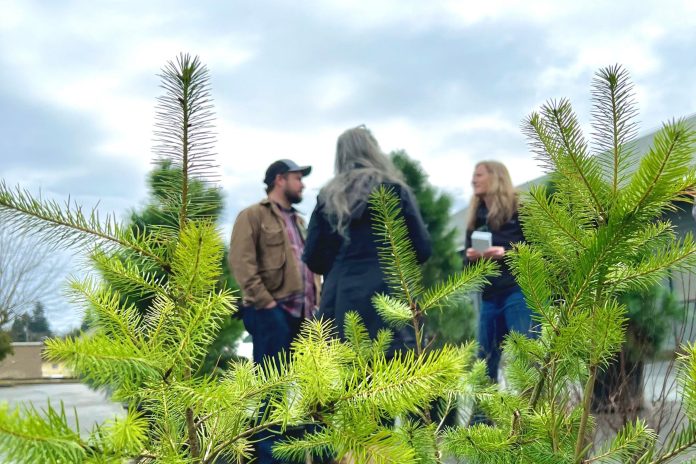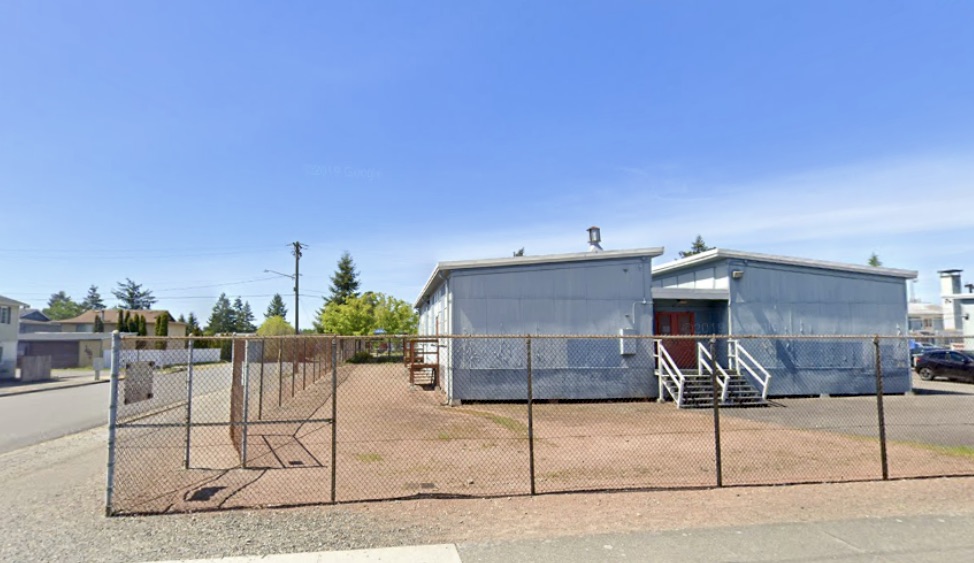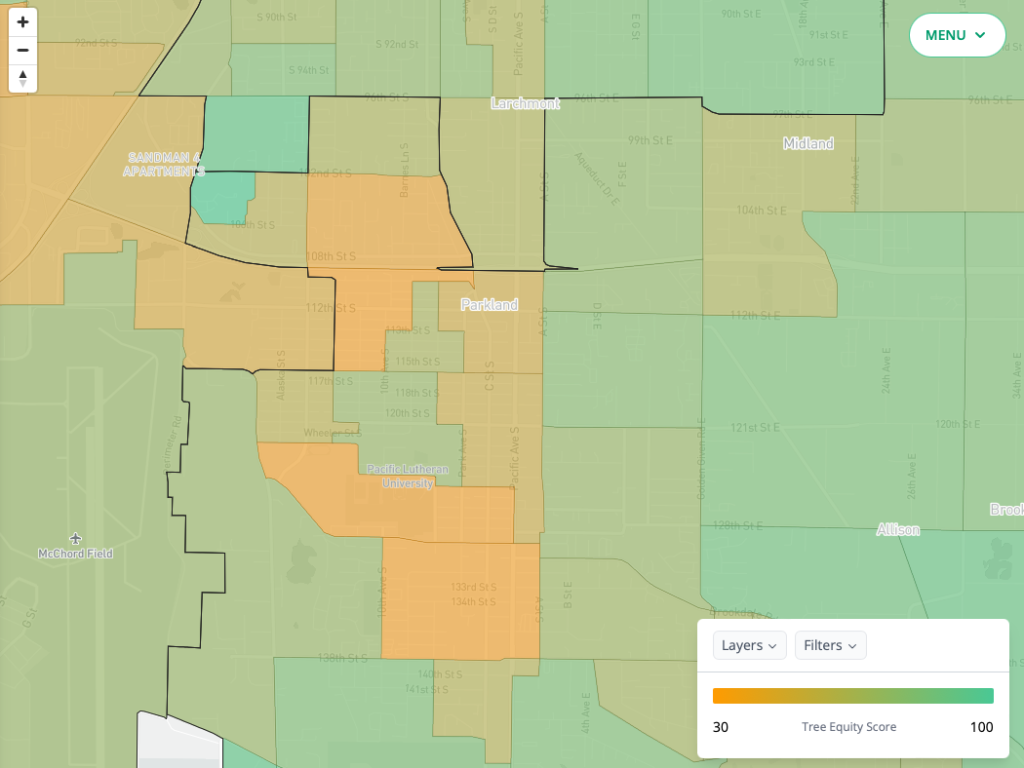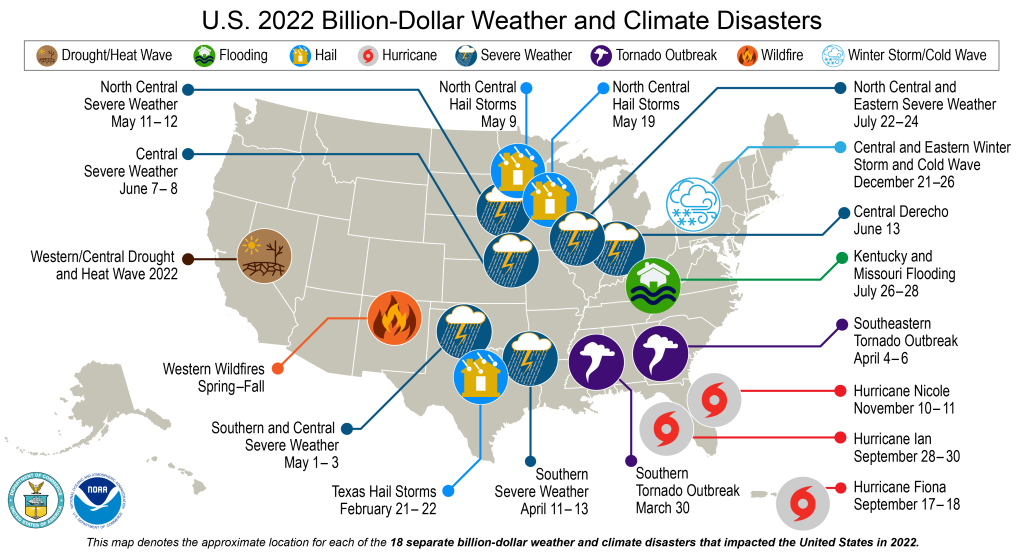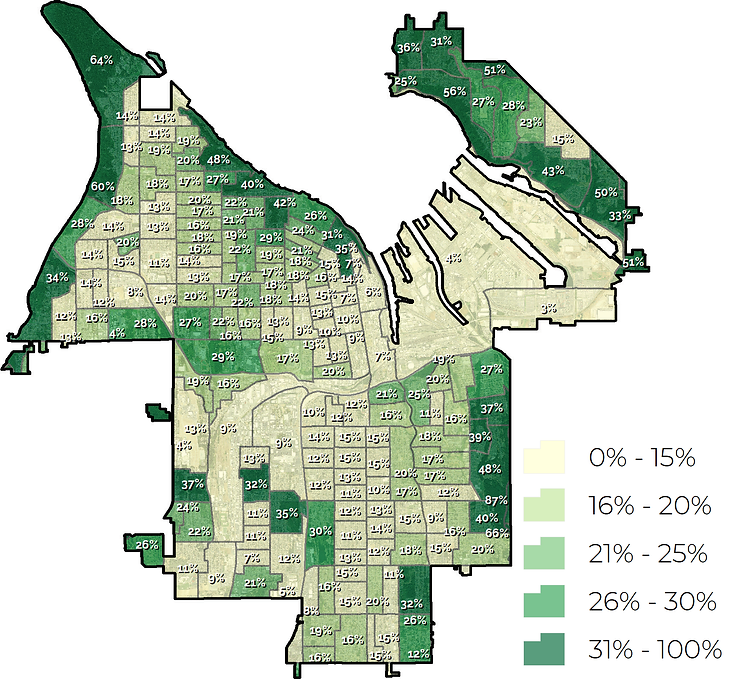On February 4th, the Tacoma Tree Foundation (TTF) will host a planting event at Madison Elementary school. The school is one of the only publicly accessible green spaces across the entire Tacoma Mall neighborhood, which is severely lacking in trees. TTF, the City of Tacoma, and Tacoma Public Schools intend to plant 62 trees and are seeking volunteers to lend hands.
The planting at Madison Elementary is related to a greater project called the Madison Green Infrastructure Project. The project will replace 16 residential roads with permeable pavement to address drainage issues in addition to other improvements to increase walkability and rollability in addition to spaces for tree planting.
According to construction manager Drew Randolph, work on the project kicked off in November 2022 and has been proceeding slowly, but smoothly. Three hundred additional street trees will be added to the neighborhood by the end of that construction project.
Clearly, TTF has employed a multifaceted approach to attack climate change in the Tacoma Mall neighborhood and help the area flourish over the next decade. While 437 trees may not seem like a lot in the grand scheme of things, these trees will be the foundation for more planting and will help us get that much closer to the City’s goal of 30% tree cover by 2030.
Getting Parkland Off the Ground
In 2018, local arborist Sarah Low saw the writing on the wall and initiated The Tacoma Tree Foundation (TTF), which aims to help Tacoma and Pierce County communities build up their local tree canopies. Since then TTF has focused its tree planting efforts on neighborhoods identified as significant heat islands, urban spaces that are consistently warmer than neighboring areas. While efforts around the Tacoma Mall continue, TTF will also shift some of its attention to the Parkland neighborhood in 2023.
Parkland is in an interesting situation. It is officially an unincorporated suburb of Tacoma, but most people who live there have Tacoma addresses. As it is not technically part of the city, Parkland does not have representation on Tacoma City Council. Though if you asked most Tacoma residents, many would say Parkland is a part of South Tacoma and many Parkland residents would say they are Tacoma residents as well. Even Pacific Lutheran University, well within Parkland boundaries, has a Tacoma address. But because of this official designation, local governments have historically not supported the area adequately.
This lack of municipal government has led to Parkland having a reputation of poverty and general unsafety. But the reputation is unfair and is of no fault of the residents. The City has not helped the image much, with the police brutality against Manuel Ellis that led to his death along the border of Tacoma and Parkland along 96th Street still fresh in many peoples’ minds. Looking at tree cover can further highlight this lack of historical support.
Trees take time to reach maturity and the low degree of cover in the above maps shows previously little thought or consideration of environmental concerns for the community. TTF and the Pierce County government saw this gap in Parkland’s canopy and knew it needed to be filled. Using funding from the Washington State Department of Natural Resources, TTF aims to distribute 200 trees to Parkland residents by the end of February 2023. Just the start of many plantings.
TTF also recognizes that community members may not know how to properly site a tree planting or provide long term care. So it is offering a free Tree Stewards Training on February 18th to help educate folks. Participants will receive a $100 stipend and lunch will be provided. Tree Steward applications are due February 8th, with priority given to Parkland residents.
Parkland residents can sign up to receive a free tree here. Volunteers can also use this same form to sign up to assist in planting on February 25th. While Tree Steward education is not required (TTF Staff and other Stewards will be present), it is definitely encouraged. This free tree and volunteer application is due February 14th.
The trees will be distributed to residents February 23rd and volunteers will assist in planting on the 25th. Also on February 25th will be a tree share that does not require previous registration, but trees will likely be limited, so sign up to guarantee your community another tree.
A Problem Growing in Urgency
2022 was just the latest of multiple consecutive years where the globe witnessed increasingly extreme weather events. In the US, the Atlantic Coast experienced some of the deadliest hurricanes to date while drought held much of the nation by the throat throughout the year. The National Oceanic and Atmospheric Association (NOAA) writes that 18 separate weather events each exceeded $1 billion in damage, with a grand total exceeding $165 billion in damages in addition to hundreds of lost lives.
One component of climate change that has led to these extreme phenomena is the design of our cities. Asphalt and concrete compose a majority of our infrastructure and these materials both absorb and emit heat at a much higher degree than natural landscapes like forests and bodies of water. What this results in are heat islands, where cities are consistently warmer than the natural lands outside their boundaries throughout the day.
Enter the Urban Tree Canopy (UTC), the degree of tree cover in cities.
A healthy UTC will not prevent climate change or the heat island effect, some scientists argue it is too late to stop these environmental catastrophes, but it will mitigate both phenomena on a local level. Tall, wide trees can shade roads and buildings, reducing the amount of heat each absorbs and then releases. Neighborhood level heat can be reduced, lowering both energy consumption and heat-related mortality. Trees can also pull the greenhouse gas CO2 out of the atmosphere, further slowing down climate change. Finally, there is no arguing of the aesthetic benefit, most people would prefer to look at greenery over gray and black concrete.
Not Just Planting
Growing a city’s UTC is more than just planting trees wherever you like. In a previous article, I showed how lacking Tacoma’s UTC is. In summary, it is the lowest (less than 20%) among all Western Washington cities that have measured, with some residential neighborhoods across the city lacking even partial cover. However there is a clear difference in neighborhoods, with wealthier, whiter neighborhoods generally having much more tree cover.
TTF employs a community centric approach, working with neighborhoods and other community groups like the Pierce Conservation District to educate folks on tree stewardship, host tree giveaways and coordinate planting across areas. Their current focus areas are the Tacoma Mall and Parkland neighborhoods, which fall far behind the rest of Tacoma’s neighborhoods in terms of tree cover. These neighborhoods have also been identified as having among the lowest opportunity in the city, showing the importance of prioritizing environmental development in these areas first as they have not received historical investment.
This past year, TTF and its partners have been able to accomplish a lot in the Tacoma Mall neighborhood. In the fall, TTF was able to distribute 75 street trees to residents and planted throughout the area through their Green Blocks program.
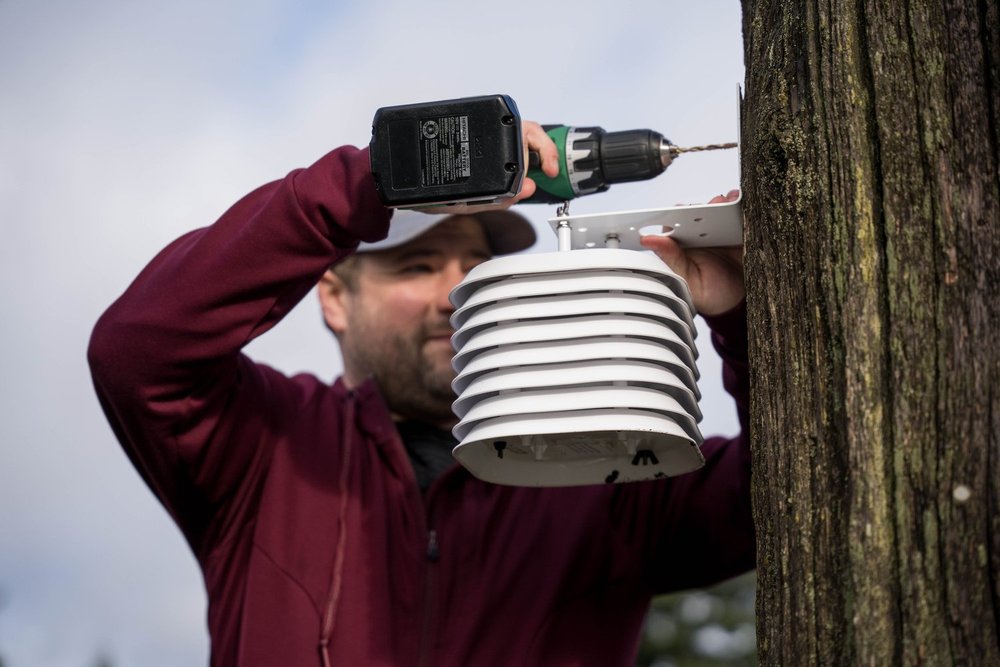
To measure the impact of these new trees in this critical area, TTF entered into a unique, collaborative project with The Nature Conservancy in Washington, the University of Washington, and the City of Tacoma called Greening Research in Tacoma (G.R.I.T.). This project has installed temperature sensors throughout the neighborhood to measure how well the trees can help fight the heat island effect. South Tacoma residents can participate in community interviews by contacting the research team at greeningresearch@uw.edu or (425) 998-6752.
On a personal note, I participated in an interview and the researcher asked a lot about my feelings and observations around greenery and trees in Tacoma in addition to what I think needs to happen to improve the situation. Though we were scheduled for an hour, I had so much to say it took almost two hours! If you are a South Tacoma resident, please participate, the researchers want to build as full a picture as possible and they can’t do it without you.
Finally, if you want to figure out if your home can host some trees, please see TTF’s Tree Care Guide. You can also access information on greening efforts in Tacoma and how you can make it happen in your neighborhood, please see this resource page on the Trees for Tacoma website.
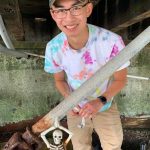
Kevin Le (Guest Contributor)
Kevin Le is a Geographic Information Science (GIS) master's student at the University of Southern California. He moved to Tacoma a few years to go to UPS and has stuck around ever since. He's interested in how we can use spatial data to understand our urban landscape and build better cities for everyone.

